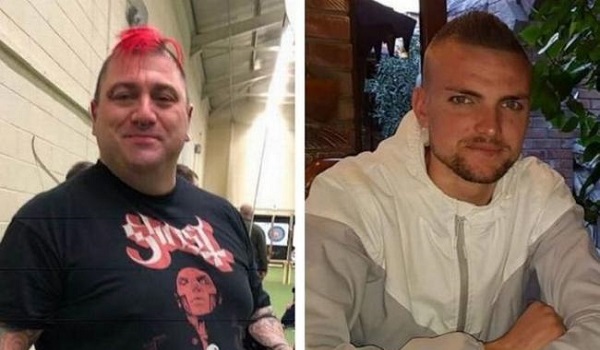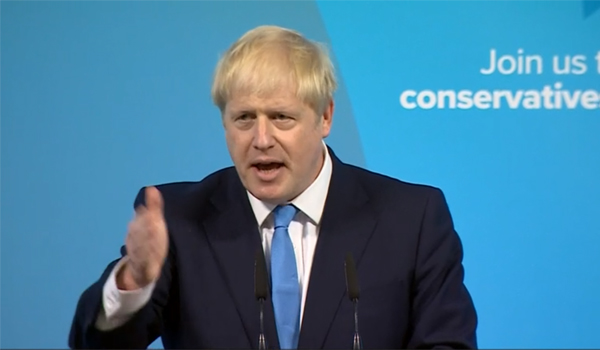Smart motorways present ongoing risk of future deaths, coroner concludes
Smart motorways “present an ongoing risk of future deaths”, a coroner has concluded, following an inquest into the deaths of two men on a stretch of the M1 with no hard shoulder.
Sheffield coroner David Urpeth said the primary cause of death of Jason Mercer, 44, and Alexandru Murgeanu, 22, on the M1 in South Yorkshire in June 2019 was the careless driving of lorry driver Prezemyslaw Szuba, who ploughed into their vehicles as they were stationary in lane one following a minor collision.
But, recording a conclusion of unlawful killing, Mr Urpeth said: “I find, as a finding of fact, it is clear a lack of hard shoulder contributed to this tragedy.”
The coroner said he will be writing to Highways England and Secretary of State for Transport Grant Shapps recommending a review of smart motorways.
He told an inquest at Sheffield town hall: “I believe that smart motorways, as things currently stand, present an ongoing risk of future deaths.”
Mr Urpeth said it was not his role to conduct a public inquiry into smart motorways, but outlined a number of areas he believed should be considered by the Government and Highways England.
He said this included combating confusion among drivers about what to do on smart motorway, especially as many stretches alternate between “traditional” and “smart” running.
Mr Urpeth said it was clear with hindsight that Mr Mercer and Mr Murgeanu should have continued to a refuge on the motorway, which was about a mile further north, rather than exchange details at the side of the live lane.
But he said: “Although unwise, I think their decision was an understandable one.”
Mr Urpeth said he cannot recall seeing any form of education for the public on how to use smart motorways, saying this was a “sad indictment” of those charged with providing this information.
Mr Mercer’s wife Claire, who has become a vocal campaigner against smart motorways, cried in court when the coroner said the lack of a hard shoulder contributed to her husband’s death.
Outside the town hall she said: “It just reiterates what we’ve been saying for months – just how dangerous these roads are.
“It was not the result we were expecting but it’s very welcome and it’s going to help the campaign along.”
She said later: “It was shock. We always knew we were right but to hear someone else say it and in this setting and with this power behind them.”
The day-long hearing heard how the tragedy happened on June 7, 2019, after a slight collision between a Ford Focus driven by Mr Mercer, from Rotherham, South Yorkshire, and a Ford Transit driven by Mr Murgeanu, who was living in Mansfield, Nottinghamshire, but was originally from Romania.
The two vehicles stopped in lane one of the four-lane motorway just north of junction 34, on the northbound carriageway, and both men had got out of their vehicles.
The coroner was told the vehicles had been stationary for about six minutes when they were hit by Szuba’s Mercedes lorry, which was travelling at a speed-regulated 56mph.
Szuba, 40, from Hull, East Yorkshire, was jailed for ten months in October last year after admitting causing the deaths of Mr Mercer and Mr Murgeanu by careless driving.
Answering questions over the phone from prison, Szuba told the hearing he accepted he was driving without paying proper attention, telling a coroner: “I have already accepted that at my trial.”
But he told the inquest: “If there had been a hard shoulder on this bit of motorway, the collision would have been avoidable.
“I would have driven past these two cars as it would be safer and they would have been able to come home safely and I would be able to come back home.”
Szuba told the inquest he had no specific training in driving on a smart motorway.
Sergeant Mark Brady, who oversees major collision investigations for South Yorkshire Police, told the hearing: “Had there been a hard shoulder, had Jason and Alexandru pulled on to the hard shoulder, my opinion is that Mr Szuba would have driven clean past them.”
But Sgt Brady accepted that the primary cause of the crash was Szuba’s inattention to the road.
Max Brown, the head of road design for Highways England, told the inquest that data showed smart motorways had reduced casualty rates by 18 per cent by one measure and 23 per cent by another.
Mr Brown accepted that the removal of the hard shoulder was an added hazard but said this was “offset” by a range of other safety measures which come with all lane-running motorways.
He said smart motorways were introduced to ease congestion without the environmental impact of road widening, but said they were designed “without compromising safety”.
Mr Brown also described further planned safety measures, including the introduction of automatic systems to detect stationary vehicles, which are due to be introduced to the M1 in South Yorkshire next month.
RAC head of roads policy Nicholas Lyes said: “Since Highways England’s major review of the design and operation of smart motorways some good progress has been made by adding more SOS areas to the M25 and developing a new standard for future schemes.
“The introduction of stopped vehicle detection technology is a vital element of this and is due to be retrofitted to existing smart motorways as well as schemes currently under construction. Sadly, there appears to have been precious little progress with retrofitting to date considering this was announced last March. While Highways England is considering a national programme to install more SOS areas on the existing network, we’d prefer them to commit to this fully so all refuge areas are consistent distances apart.
“We’d also like to see whether the promise of additional traffic officer patrols has been fulfilled as this will be a crucial ingredient in providing extra protection for drivers that are unfortunate enough to be stranded in a dangerous live-lane scenario. While we’re very supportive of stopped vehicle detection technology, the success of it still depends on other drivers seeing and obeying red ‘x’ closed-lane signs. If drivers don’t see these because gantries or verge-mounted signs are too far apart, then there’s still a risk of collision with a stationary vehicle.”







